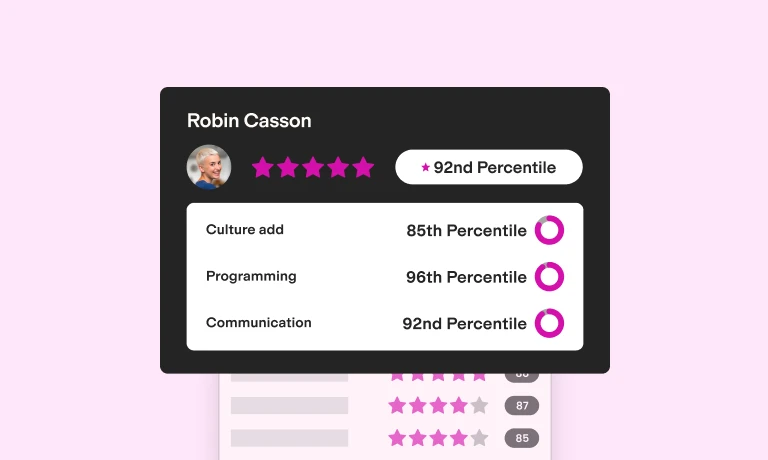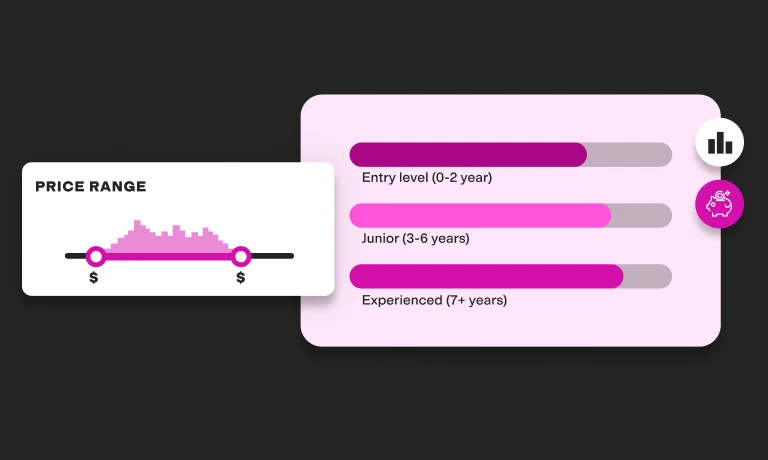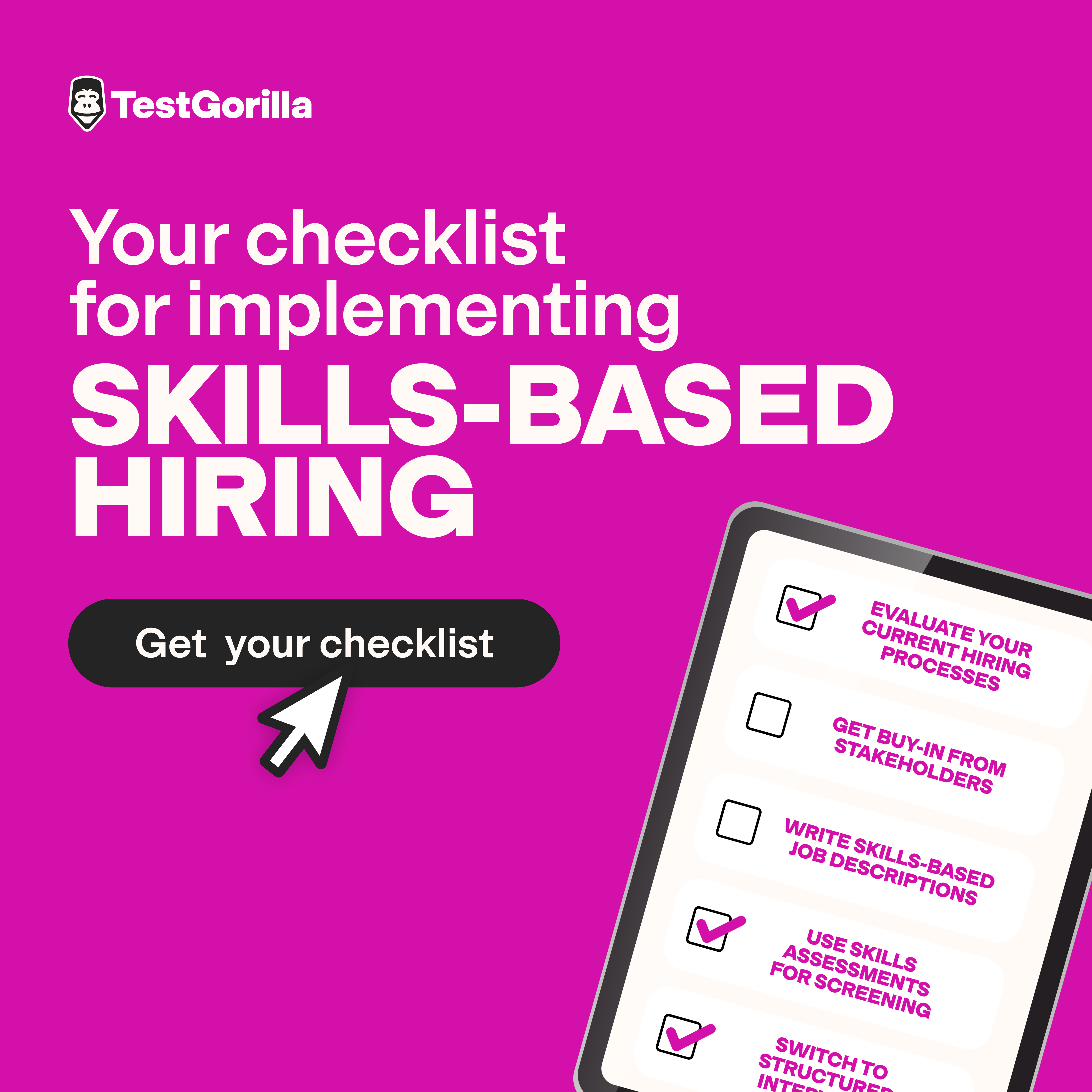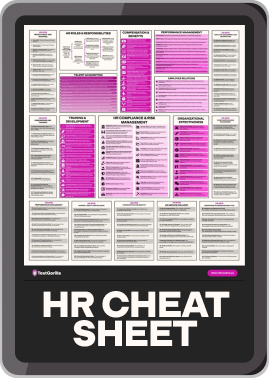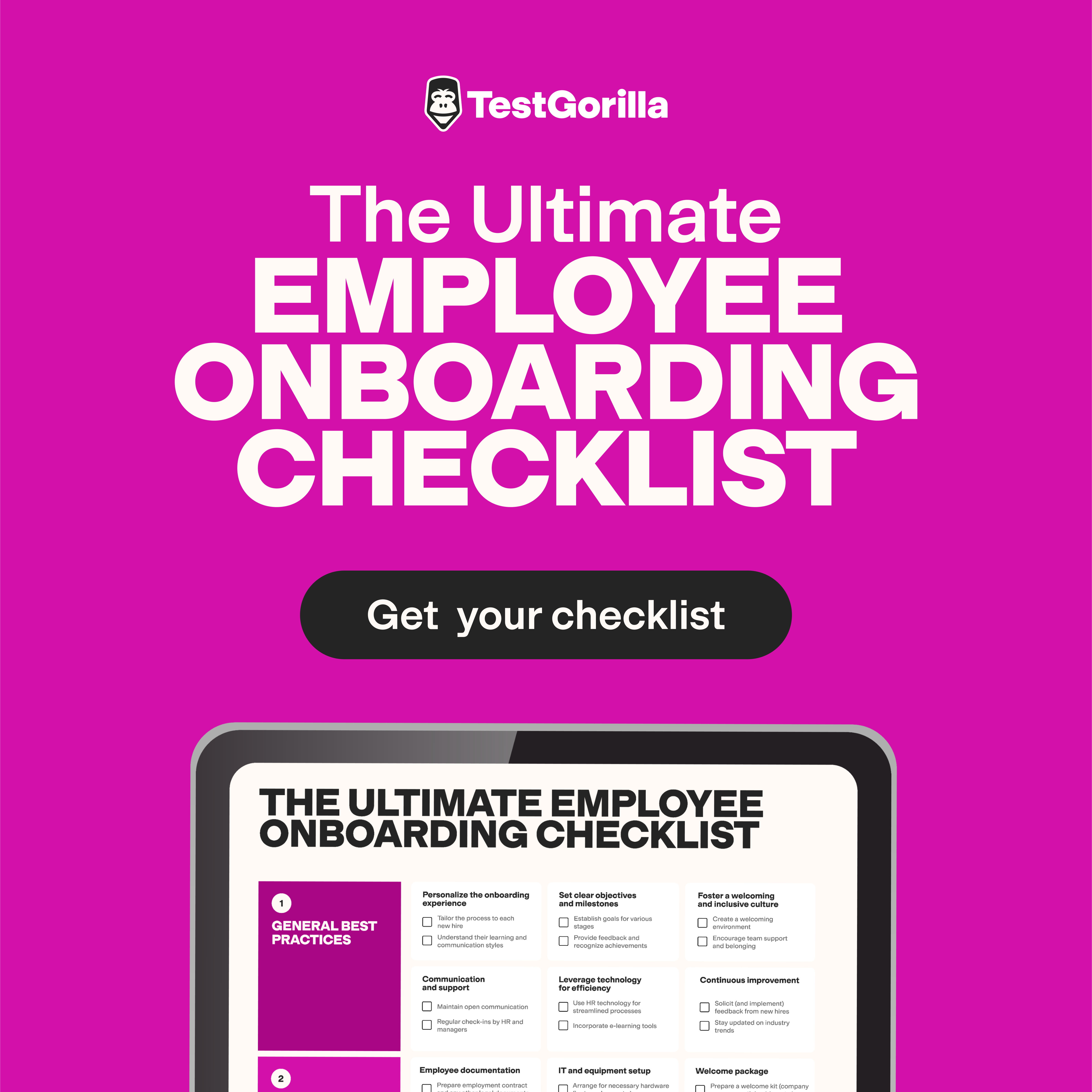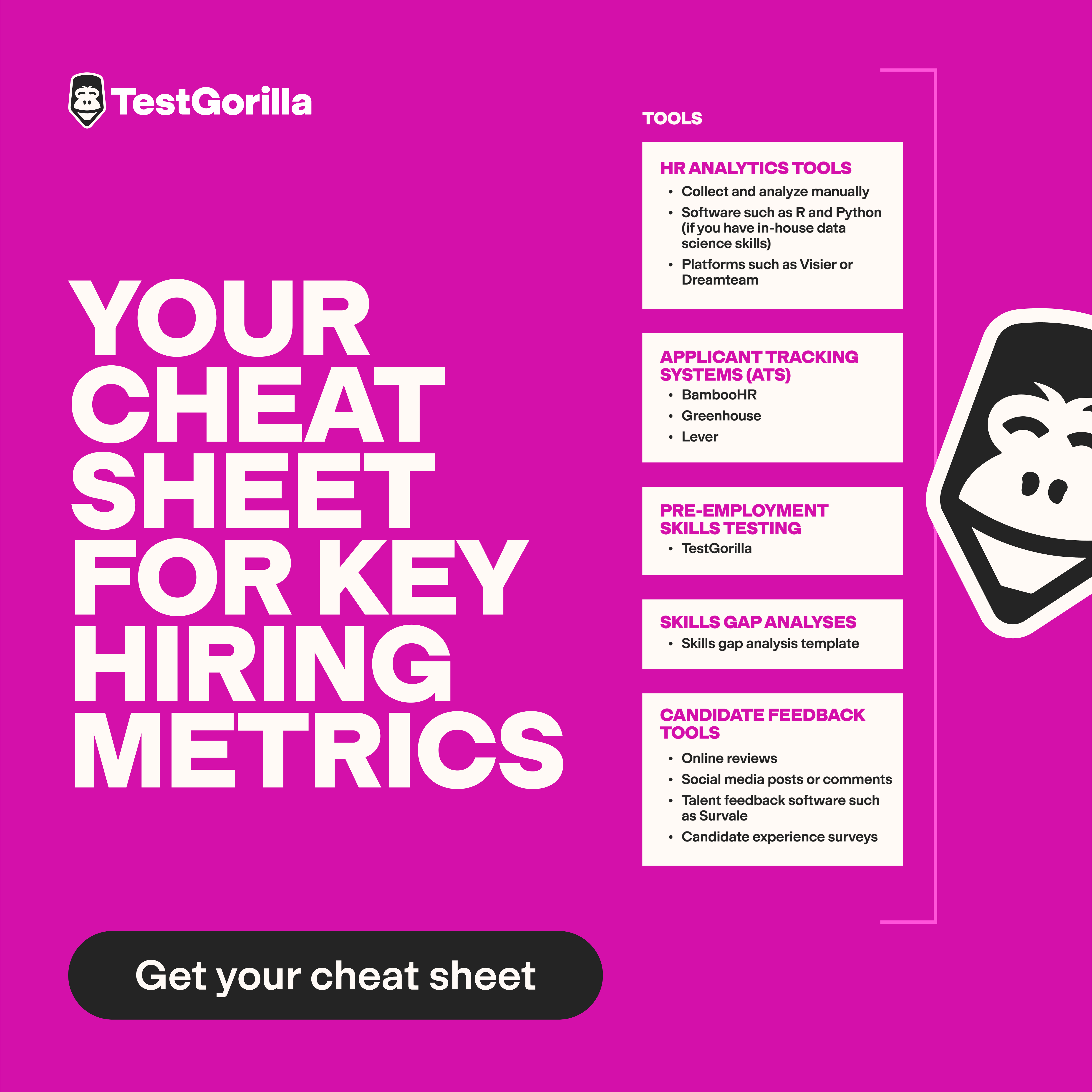With global hiring on the rise, finding candidates with strong language skills is more important – and challenging – than ever. Language proficiency tests verify candidates’ abilities beyond a resume or a casual conversation.
However, with various frameworks and assessments available, it’s hard to know which one to choose for your hiring needs.
In this guide, we explore the most commonly used language proficiency frameworks and tests, how to choose the right one, and how you can best use it to support your hiring processes.
Table of contents
- Understanding language proficiency levels
- Common language proficiency frameworks
- Major language proficiency tests
- Integration of language tests in hiring processes
- Preparing candidates for language tests
- Use cases across industries
- How recruiters can use TestGorilla’s language tests
- Mapping TestGorilla tests to global standards
- Identify the ideal candidate for your team
Understanding language proficiency levels
Language proficiency measures how well someone can read, write, speak, and listen in a specific language.
In a hiring context, candidates’ language skills directly relate to how well they can communicate. Roles like cleaning staff, kitchen hands, and warehouse workers may only require basic skills, while others, for example, those in the healthcare, finance, and legal sectors, usually demand fluency.
Not sure whether your role calls for fluency or proficiency? Learn the difference in our guide on proficiency vs. fluency.
Common language proficiency frameworks
Several commonly used frameworks provide a standard scale to grade and compare language skills.
The Common European Framework of Reference for Languages (CEFR) is one of the most popular, especially in hiring. The CEFR can be used to assess any language, measuring a language learner’s abilities on a six-point scale:
A1: Can use and understand some basic words and short phrases, for example, introducing themselves or asking basic questions.
A2: Can use and understand common sentences and expressions on more complex topics, including employment.
B1: Can handle most travel situations and simply describe abstract concepts, like dreams and plans.
B2: Can understand more complex text, speak with some fluency, interact with native speakers, and discuss the pros and cons of various topics.
C1: Can use longer, more complex sentences and understand implicit meaning. Competent in using the language in professional, academic, and social contexts.
C2: Can understand almost everything and speak with a high degree of ease and fluency. Communicates accurately and precisely across all subjects and situations.
Other language proficiency rating frameworks in the US include the following:
The best insights on HR and recruitment, delivered to your inbox.
Biweekly updates. No spam. Unsubscribe any time.
Major language proficiency tests
Different tests are available to measure candidates’ language proficiency against the CEFR or other frameworks. Here are some common English-language assessments:
Test of English for International Communication (TOEIC)
Developed by the Educational Testing Service (ETS), the TOEIC is one of the leading English communication skills tests used in professional settings.
The assessment is offered in two parts:
Listening and reading (two hours)
Speaking and writing (one and a half hours)
Test-takers are scored from 10-990 for listening and reading, or 0-400 for speaking and writing.
Test of English as a Foreign Language (TOEFL)
Also developed by ETS, the TOEFL is the most widely accepted English test for academic purposes and is often used in university applications. It assesses students’ four language skills (listening, reading, speaking, and writing) on a scale of 0-120.
Depending on the version, it takes one and a half or three hours to complete.
International English Language Testing System (IELTS)
The IELTS is another widely recognized English language test used by employers, academic institutions, and immigration departments.
Two IELTS tests are available: the IELTS Academic and the IELTS General Training, which is suitable for work purposes. Both are two hours and 45 minutes long.
The IELTS assesses candidates across the four language skills mentioned above, scoring them from zero (non-user) to nine (expert).
Duolingo English test
The Duolingo English test is gaining popularity with employers and universities as it’s more affordable than other standardized tests.
Taking one hour to complete, this test measures the standard four skills and marks candidates on a scale of 10-160.
Depending on the location and requirements of your business, you may need to assess candidates in languages other than English. Here are some popular foreign language assessments:
Diplôme d’Études en Langue Française (DELF) and Diplôme Approfondi de Langue Française (DALF) are often used to assess French proficiency according to the CEFR framework.
Diplomas de Español como Lengua Extranjera (DELE) are official qualifications in the Spanish language issued by the Spanish government, which also adhere to the CEFR framework.
Hanyu Shuiping Kaoshi (HSK) assesses Chinese proficiency from Level 1 to Level 9 and is accepted by various Chinese employers and universities.
The Japanese Language Proficiency Test (JLPT) is the most widely recognized test for assessing Japanese language proficiency when working, studying, or relocating to Japan.
How to choose the right test
The first – and most obvious – consideration is the target language.
You should also consider candidates’ preferences. Most candidates expect to complete their pre-employment assessments online, but not all language tests offer this option. For example, the French DALF test must be done in person at an official center.
Cost may also be a factor. For example, the Duolingo English test is around $59, while the IELTS costs between $280 and $340.
TestGorilla offers an affordable alternative to the major language tests. With our multi-measure assessments, you can combine these language tests with other job-specific and culture add tests to find the best person for the job.
Integration of language tests in hiring processes
Here are our tips for using language assessments effectively for recruitment.
Ensure the level you require matches the job’s demands. For example, construction workers may only require a level A2/B1 in the relevant language, whereas a project manager may need a level C1/C2. Defining the required level helps you select the appropriate test and avoid inadvertently excluding qualified candidates.
Ask candidates to take the test at an early stage. With the help of applications like ChatGPT, it’s hard to assess someone’s language proficiency accurately from their resume alone. Testing early in the hiring process filters out unsuitable applicants at the earliest opportunity, saving both your and the candidates’ time.
Offer online assessments. This approach is more convenient and practical, especially if many candidates need to complete the evaluation early in the hiring process or if you’re hiring remotely.
Only use reliable, validated tests. Only choose tests that are scientifically backed. All the major language assessments have undergone extensive program evaluation. Similarly, TestGorilla’s language assessments are developed by subject matter experts and regularly reviewed for validity and reliability.
Preparing candidates for language tests
You can take several steps to prepare candidates for a language assessment and reduce test anxiety.
Be transparent with candidates
Clearly state the language proficiency requirement and what test candidates will be expected to do in the job posting. This gives applicants time to read about the test and prepare for it.
Clearly explain the purpose of the test
When communicating with candidates, ensure they understand why you’re asking them to do the test by linking it to the job’s duties and responsibilities. This helps applicants see the value of the assessment, thereby reducing their anxiety about it.
Provide candidates with test-taking tips
This includes practical tips, like setting up their computer correctly, links to online practice exams, and recommendations for language software programs that help them brush up on their skills. Explain the test format well in advance so candidates know exactly what to expect.
Encourage open communication
Invite candidates to contact you with any questions or concerns before the assessment. When speaking with candidates, reassure them and provide any further information they need to feel confident about taking the test.
Use cases across industries
Language skills tests are also valuable beyond hiring processes.
Most educational institutions, especially universities, require language proficiency so that students can participate fully in their courses. For instance, Yale University requires certain non-native English speakers to take a test to assess their English language proficiency.
Many countries require visa and citizenship applicants to have a certain level of language proficiency. For example, to apply for citizenship via marriage in France, non-native French speakers must have a B1 certificate (this requirement will soon increase to B2).
Governments also rely on language tests. In the US, for example, non-US citizens who want to join the military must be fluent in English. Foreign service workers typically need proficiency in one or more languages other than English.
How recruiters can use TestGorilla’s language tests
TestGorilla has various foreign language proficiency tests to help you accurately assess candidates’ language skills in over 15 languages, these are:
Available language proficiency tests
Language | A2 Elementary | B1 Intermediate | B2 Upper Intermediate | C1 Advanced | C2 Proficient |
— | — | ||||
— | — | ||||
— | — | — | |||
— | & | — | — | ||
— | — | — | — | ||
— | — | — | |||
— | — | — | |||
— | — | — | — | ||
— | — | — | |||
— | — | ||||
— | — | — | |||
— | — | — | |||
— | — | — | |||
— | — | — |
Our tests follow the CEFR framework, offering assessments at A2, B1, B2, C1, or C2 levels, depending on the language.
Mapping TestGorilla tests to global standards
If you want to use the ACTFL or ILR frameworks, TestGorilla results are still a helpful guide:
TestGorilla/CEFR | ACTFL (Reading and Listening) | ACTFL (Speaking and Writing) | ILR |
Intermediate Mid | Intermediate Low | Elementary + | |
Intermediate High (B1.1) Advanced Low (B1.2) | Intermediate Mid (B1.1) Intermediate High (B1.2) | Limited working proficiency | |
Advanced Mid | Advanced Low (B2.1) Advanced Mid (B2.2) | Limited working proficiency + | |
Advanced High (C1.1) Superior (C1.2) | Advanced High | Professional working proficiency | |
Distinguished | Superior | Professional working proficiency + |
Identify the ideal candidate for your team
Finding candidates with the right language skills is easy with language proficiency testing.
There are various tests out there to choose from. The right one for your hiring process depends on the language you’re assessing, your budget, and candidate expectations. TestGorilla offers an accessible alternative to the major language tests while also following the globally recognized CEFR framework.
Get a demo to find out how TestGorilla can help you assess candidates’ language abilities – and more.
You've scrolled this far
Why not try TestGorilla for free, and see what happens when you put skills first.




